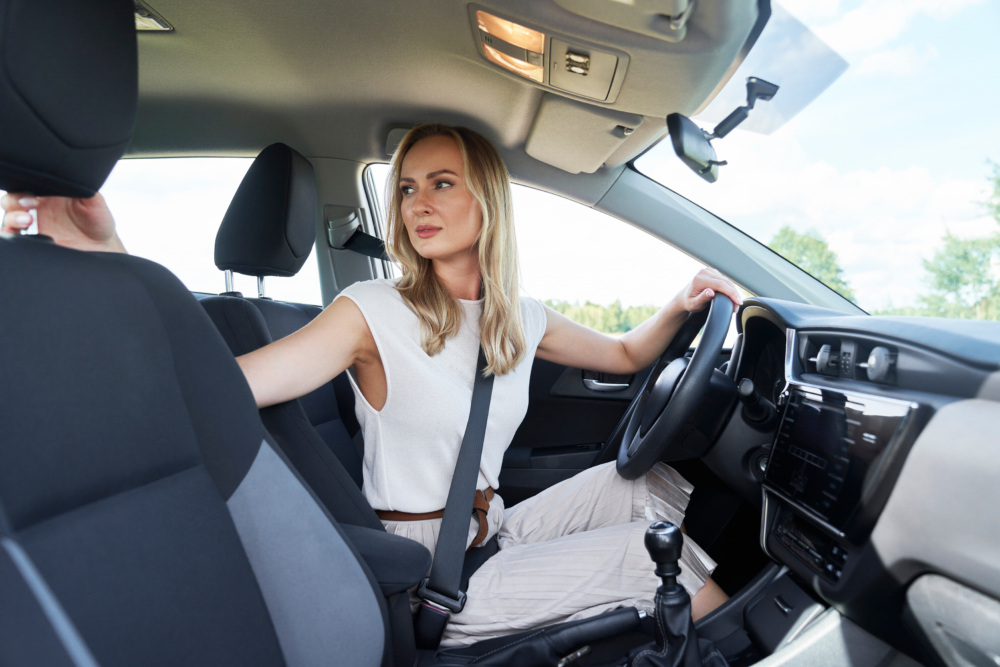Should you wear sunscreen when driving? Car windows fall short on UV protection, study says

There’s plenty to be mindful of when you’re in your car–construction, traffic, your partner’s questionable music choices–but what about skin cancer?
It may not be something that’s top of mind for many drivers, but if you’re taking a road trip, you have a long work commute or you’re just driving to see relatives, your skin could be exposed to both UVA and UVB rays for extended periods of time.
UVA vs. UVB explained
Ultraviolet (UV) radiation from the sun is made up of UVA and UVB rays. While UVB rays are primarily what causes sunburn, UVA rays may also damage your skin’s DNA. According to the American Academy of Dermatology, overexposure to either type of UV rays can cause skin cancer.
UVA rays make up about 95% of UV radiation and penetrate the layers of skin more deeply, causing premature skin aging and wrinkles.
UVB rays make up about 5% of UV radiation and usually affect the outermost layers of skin, leading to sunburn.
Unprotected exposure to both UVA and UVB rays can cause damage to the DNA of cells, which can lead to skin cancer. The World Health Organization declared UV radiation a human carcinogen.
So, both types of UV rays are harmful, but what about car rides is putting us at risk?
Do car windows protect us from UV rays?
In short, no.
A study published in 2016 analyzed 29 automobiles from 15 manufacturers to determine whether windshield and side window glass protect our skin from the sun’s rays.
The results determined that front windshields offered adequate UVA and UVB protection, but side windows were effective at stopping only UVB rays, not UVA rays.
In fact, only four of the 29 vehicles tested contained side windows with what researchers considered “high-level” UVA blockage, which they graded at greater than 90%.
The study found that front windshields blocked 96% of UVA rays, while side windows blocked only 71%.
Researchers say the difference in protection is because of the way the windshields and windows are constructed.
Front windshields are constructed of laminated glass, which means there’s a layer of plastic embedded between two panes of glass. That plastic layer is actually the piece that contains the UVA protection—the glass itself does not offer any protection.
Side windows are typically constructed of tempered glass and don’t contain that protective plastic layer.
The study also determined that whether or not your side windows are tinted has no impact on the penetration of UVA rays.
In two other studies, both conducted by the American Academy of Dermatology, researchers investigated the disproportionate percentage of skin cancer diagnoses beginning on the left side of the body and face.
In one study, they examined all types of skin cancer diagnoses in both men and women and found that more cancers began on the left side than the right by a split of 6%, with an even stronger skew for men.
In the other study, they determined that skin cancer is “significantly more likely” to arise on the left side of the body than the right, and that it was more likely to begin on the arm.
The researchers called driver-side UV exposure, “a likely contributing factor.”
How can I protect myself?
Whether your windows are up or down, you can be exposed to UVA rays while driving. Here are a few tips to protect yourself:
- Keep a travel-sized sunscreen in your glove compartment so you’re never on the road without sun protection. In extreme temperatures, such as in summer or winter, you may want to keep this indoors and bring it with you, depending on the climate where you live.
- While you’re at it, always carry a lip balm with SPF 30 or higher with UVA and UVB protection. Just like with sunscreen, reapply every two hours you’re in the sun, even on cloudy days.
READ MORE | How to read sunscreen labels
- Invest in a protective window film. There are several such products that say they offer up to 99% protection against UVA rays. Look for a product with the Seal of Recommendation from our friends at the Skin Cancer Foundation.
- Make sure your sunglasses offer full UV protection (these will be marked with a UV400 rating). Choose a high-quality lens (polycarbonate or trivex) and a frame that fits well and wraps around to protect the skin around your eyes.
- Wear sun-protective clothing when possible, such as hats and long-sleeve shirts.
- Get an annual skin check. It’s a good idea to have your health care provider examine your skin every year.
- Do a monthly self-check. Use the ABCDEs of skin cancer to check your skin once a month for possible signs of melanoma. If you have a mole that concerns you, see your health care provider right away.
Next time you prepare to hit the road, be mindful of the sun and make sure you’ve got what you need to protect yourself. Skin cancer prevention begins with everyday actions like these!
READ ALSO | How to protect yourself from the sun
Skin cancer is the most common cancer diagnosis in the U.S. and is also one of the most preventable cancers. The Prevent Cancer Foundation recently spoke with dermatologist Dr. Jamie Goldberg about her top tips for skin cancer prevention. Here’s what Dr. Goldberg wants you to know about protecting your skin.